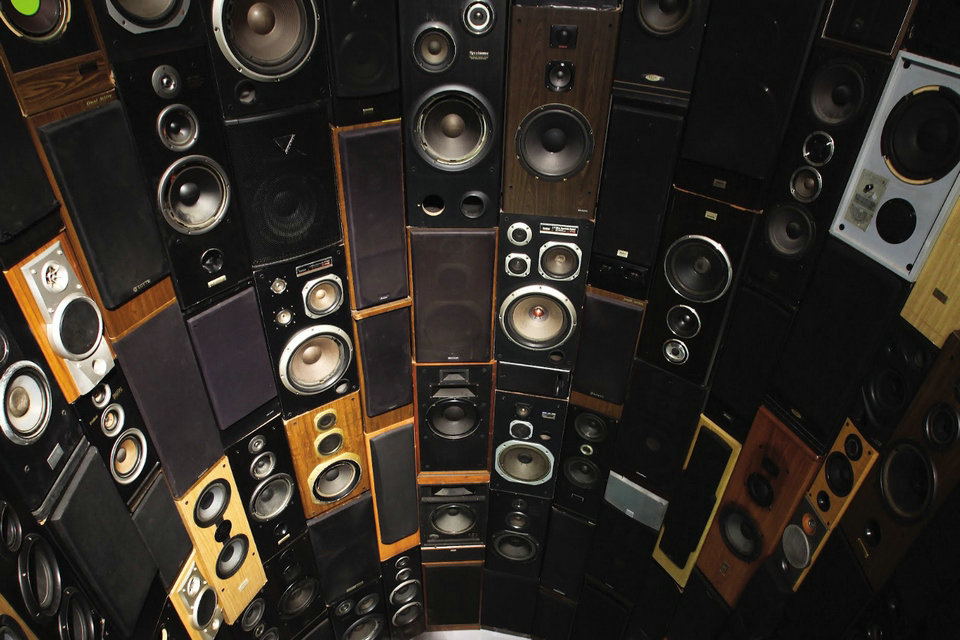Sound collage


In music, montage (literally “putting together”) or sound collage (“gluing together”) is a technique where newly branded sound objects or compositions, including songs, are created from collage, also known as montage. This is often done through the use of sampling, while some playable sound collages were produced by gluing together sectors of different vinyl records. In any case, it may be achieved through the use of previous sound recordings or musical scores.[citation needed] Like its visual cousin, the collage work may have a completely different effect than that of the component parts, even if the original parts are completely recognizable or from only one source.
History
The origin of sound collage can be traced back to the works of Biber’s programmatic sonata Battalia (1673) and Mozart’s Don Giovanni (1789), and some critics have described certain passages in Mahler symphonies as collage, but the first fully developed collages occur in a few works by Charles Ives, whose piece Central Park in the Dark, composed in 1906, creates the feeling of a walk in the city by layering several distinct melodies and quotations on top of each other. Thus, the use of collage in music actually predates its use in painting by artists like Picasso and Braque, who are generally credited with creating the first collage paintings around 1912.[citation needed]
Earlier traditional forms and procedures such as the quodlibet, medley, potpourri, and centonization differ from collage in that the various elements in them are made to fit smoothly together, whereas in a collage clashes of key, timbre, texture, meter, tempo, or other discrepancies are important in helping to preserve the individuality of the constituent elements and to convey the impression of a heterogeneous assemblage. What made their technique true collage, however, was the juxtaposition of quotations and unrelated melodies, either by layering them or by moving between them in quick succession, as in a film montage sequence.[citation needed]
The first documented instance of sound collage created by electronic means is the piece “Wochenende” (in English, “Weekend”), a collage of words, music and sounds created by film-maker and media artist Walter Ruttmann in 1928. Later, in 1948, Pierre Schaeffer used the techniques of sound collage to create the first piece of musique concrète, “Étude aux chemins de fer”, which was assembled from recordings of trains. Schaeffer created this piece by recording sounds of trains onto several vinyl records, some of which had lock grooves allowing them to play in a continuous loop. He then set up multiple turntables in his studio, allowing him to trigger and mix together the various train sounds as needed.
Sound collages became technically feasible with the increasing spread of magnetic tape in the early 1960s. Cinematographers soon recognized the possibility of razor- cutting ribbons, reassembling them, and incorporating additional sources. A short time later, the first musicians took to this process: Iannis Xenakis is considered the first known composer who has worked with sound collages, other pioneers are John Cage, Brion Gysin and William S. Burroughs. The most famous early examples in pop music are found in the music of the Beatles. For the pieceBeing for the Benefit of Mr. Kite! On the album Sgt. Pepper’s Lonely Hearts Club Band of 1967, her producer George Martin disassembleda carousel and rejoined the fragments in random order. Under the influence of his then-life partner, the Japanese avant-garde artist Yoko Ono, John Lennon put together an eight-minute sound collage of sounds and voices, in 1968 under the name Revolution No. 9 was released on the album The Beatles.
In the 1980s and 1990s, two well-known copyright laws influenced the public perception of the term: In addition to the Canadian Recording Association, John Oswald sued after the publication of the collage Plunderphonics, the record company Island Records went to court against the band Negativland, the one single called U2 with samples of the rock band of the same name.
The growing popularity of Rap and House in the 1990s, which made sampling and the idea of sound collage a stylistic device, furthered interest in sound collages.
Today audio collage may be thought of as Fluxus postmodern and a form of digital art. George Rochberg is an artist well known for his use of collage in pieces including Contra Mortem et Tempus and Symphony No. 3.
Micromontage
Micromontage is the use of montage on the time scale of microsounds. Its primary proponent is composer Horacio Vaggione in works such as Octuor (1982), Thema (1985, Wergo 2026-2), and Schall (1995, Mnémosyne Musique Média LDC 278–1102). The technique may include the extraction and arrangement of sound particles from a sample or the creation and exact placement of each particle to create complex sound patterns or singular particles (transients). It may be accomplished through graphic editing, a script, or automated through a computer program.
Regardless, digital micromontage requires:
creation or compilation of a library of sound files on several different time scales
importation into the library of the editing and mixing program
use of the cursor, script, or algorithm to position each sound at a specific time-point or time-points
editing of the duration, amplitude, and spatial positions of all sounds (possibly done by a script or algorithm)
Granular synthesis incorporates many of the techniques of micromontage, though granular synthesis is inevitably automated while micromontage may be realized directly, point by point. “It therefore demands unusual patience” and may be compared to the pointillistic paintings of Georges Seurat.
Source from Wikipedia